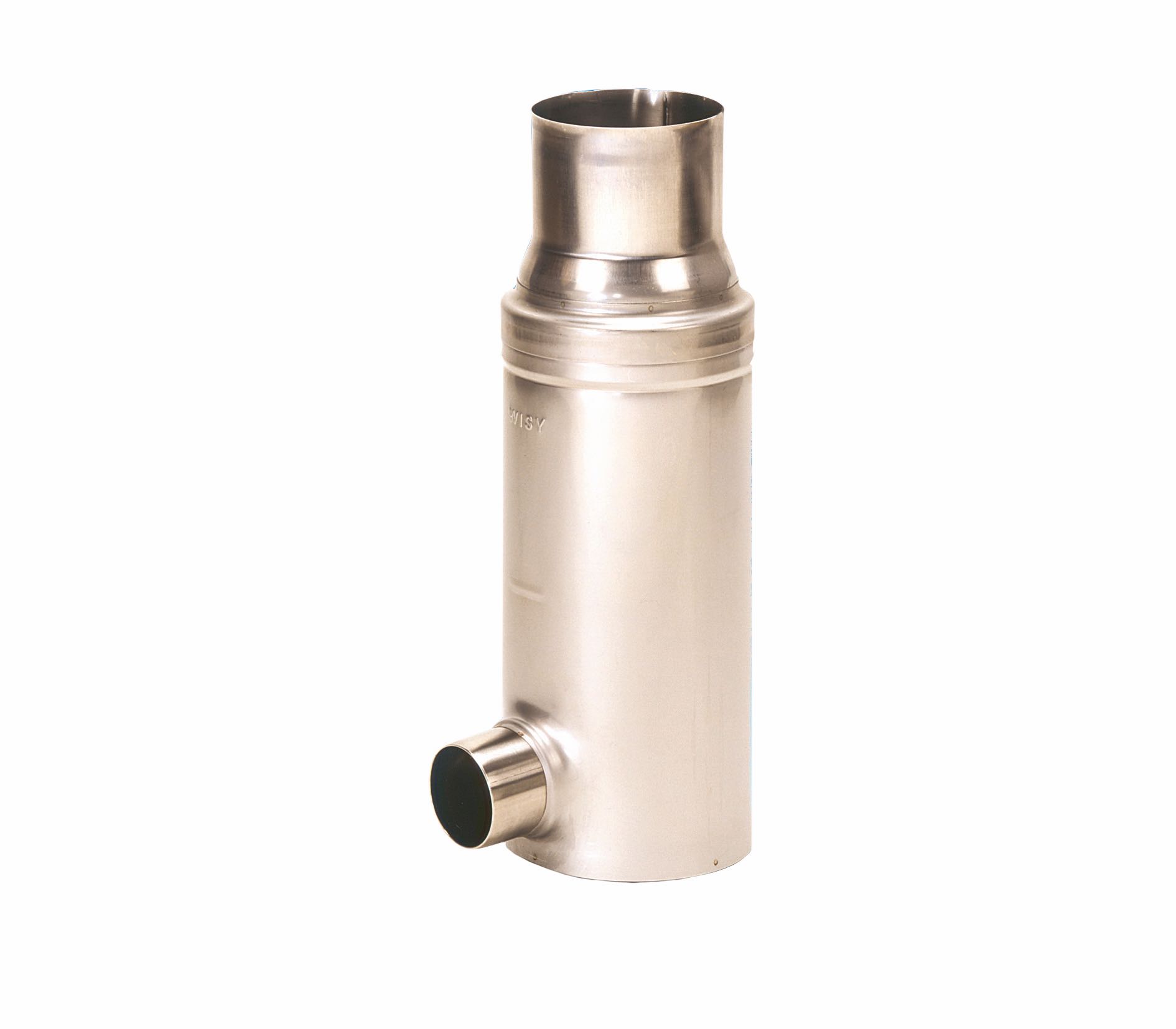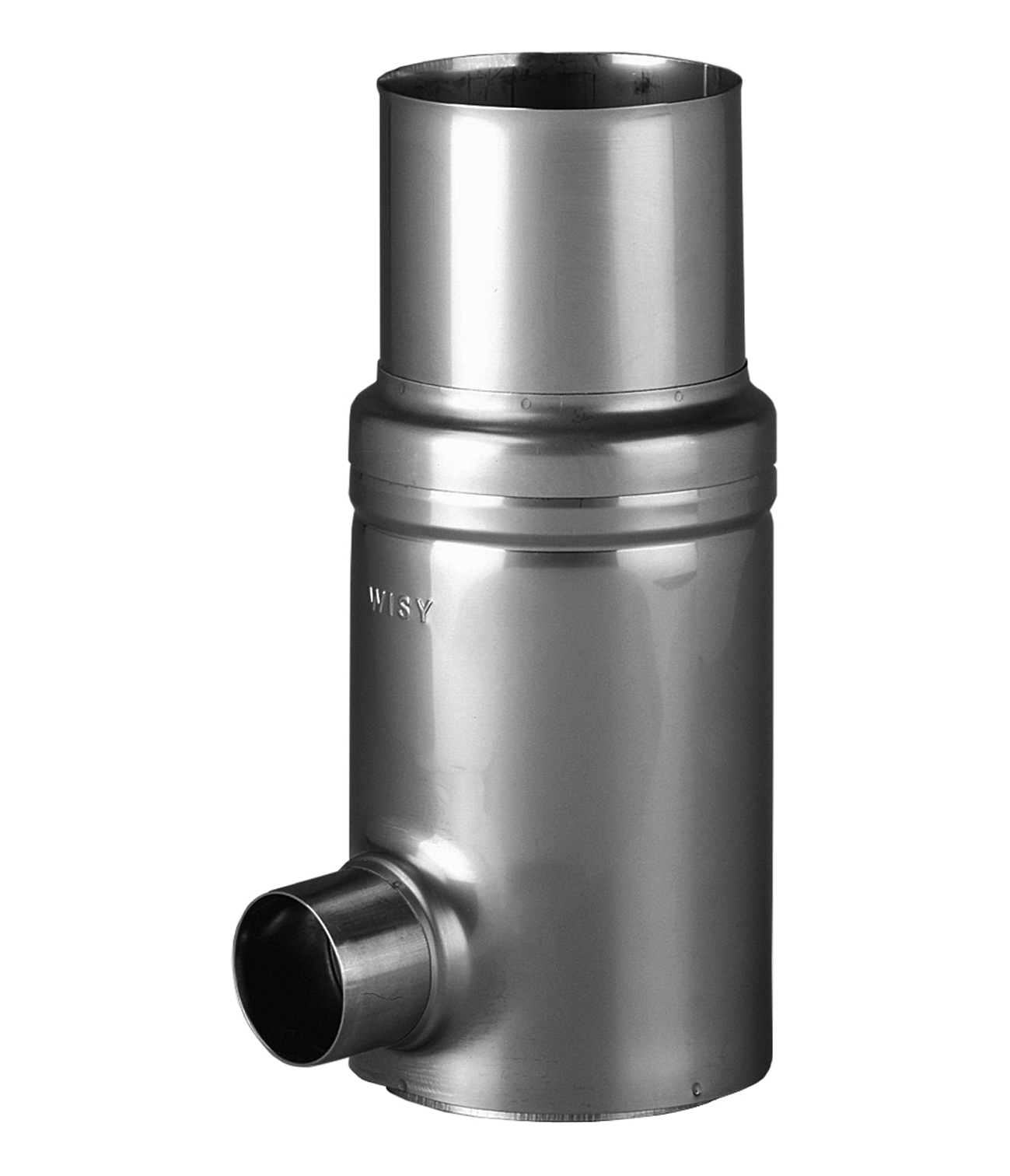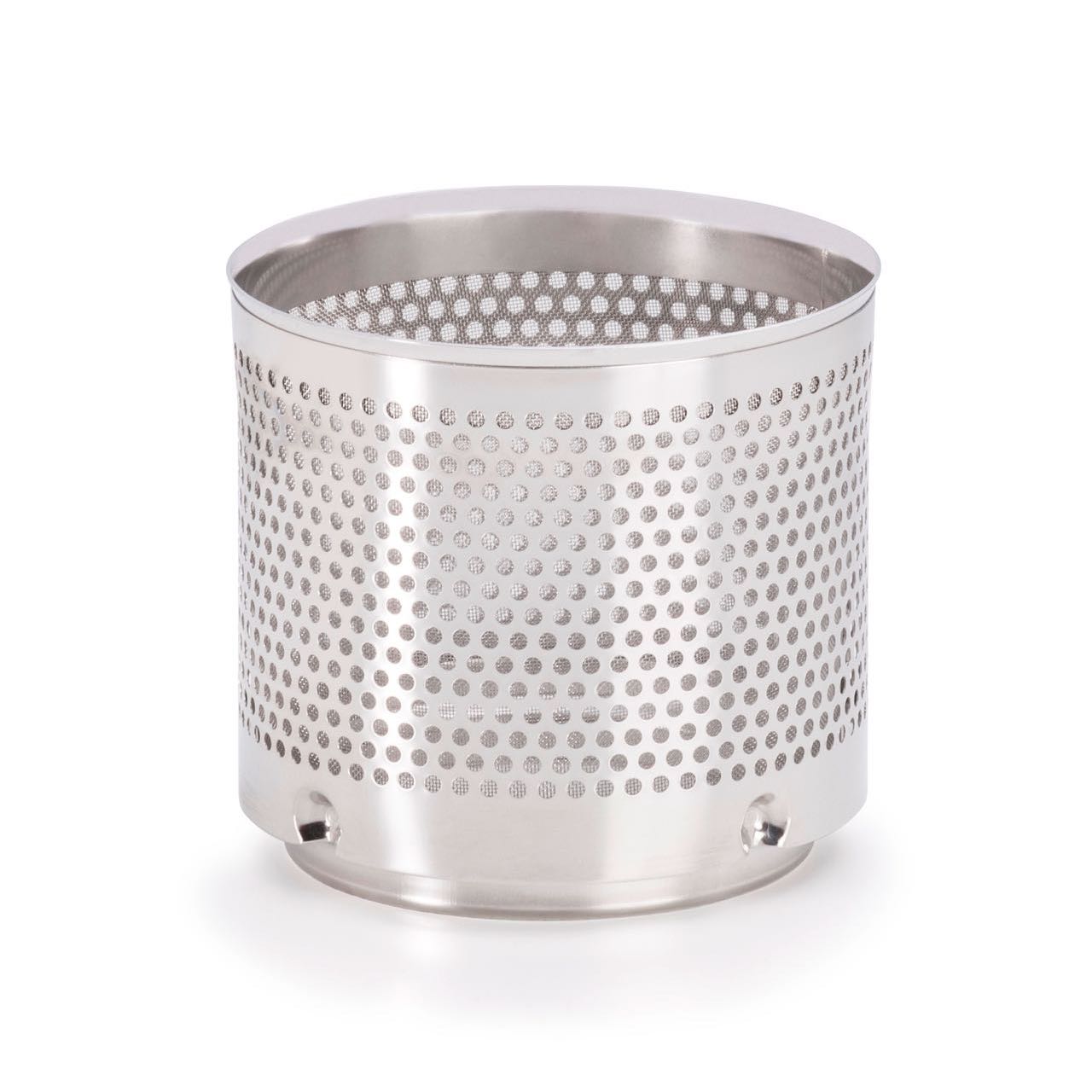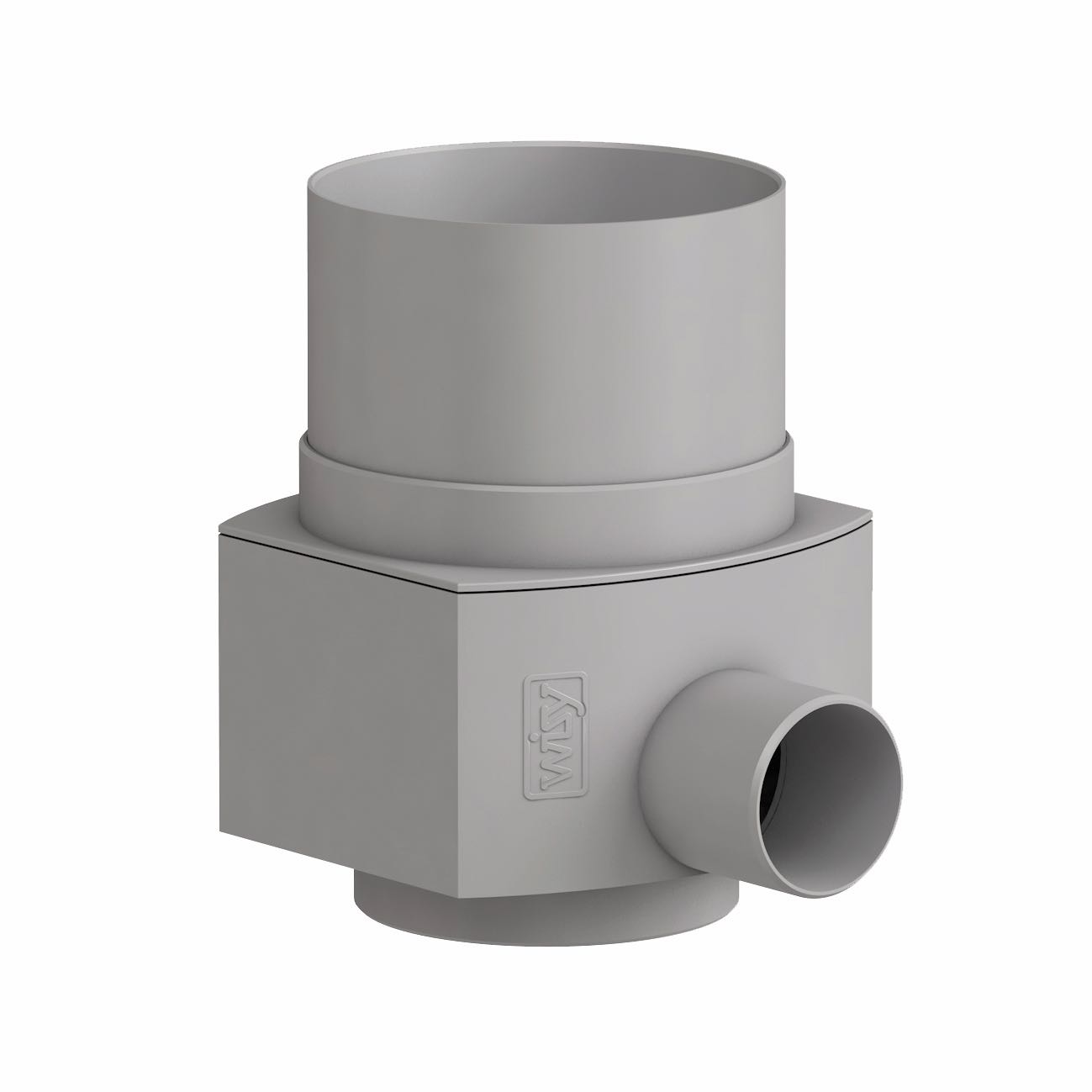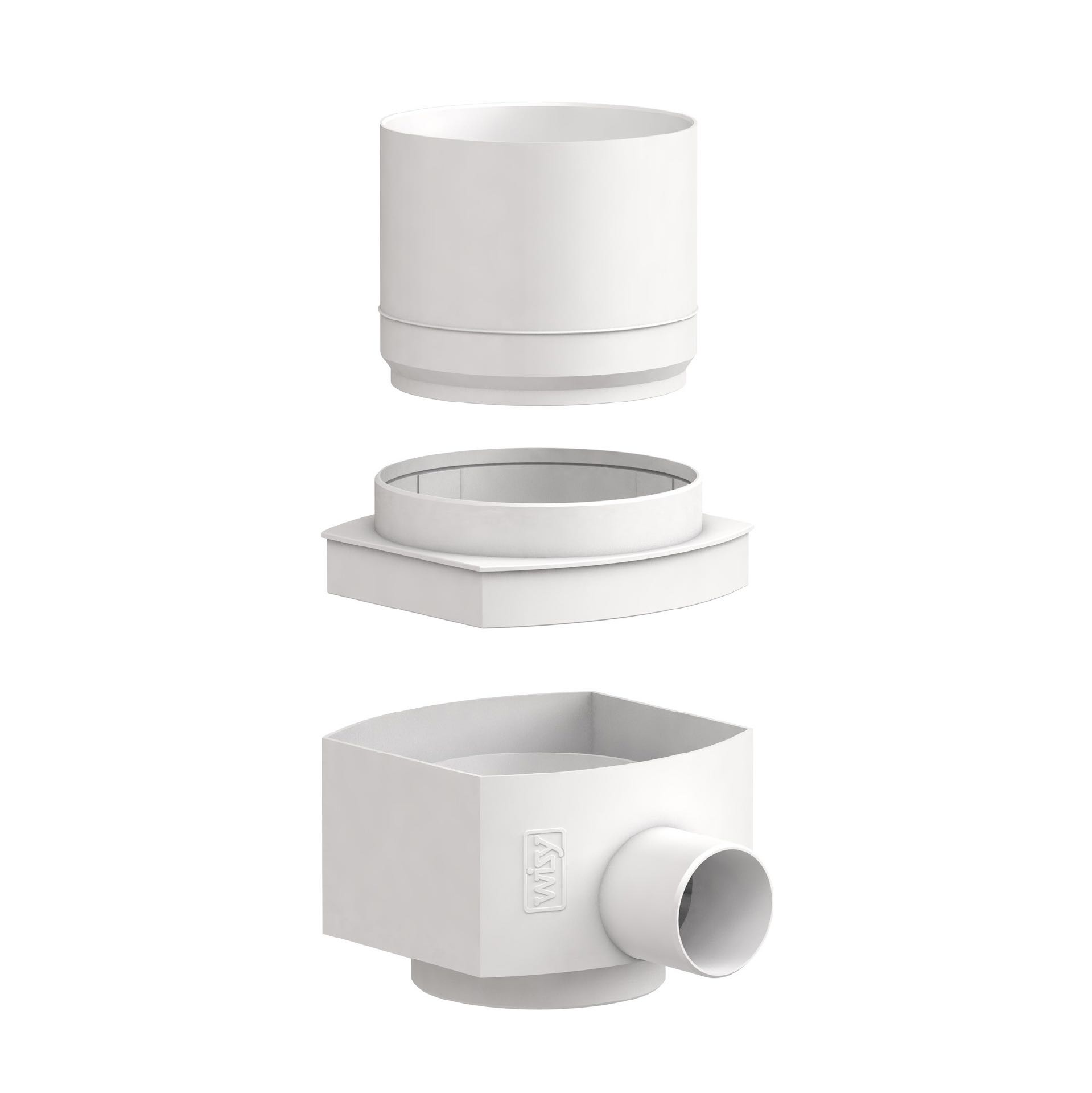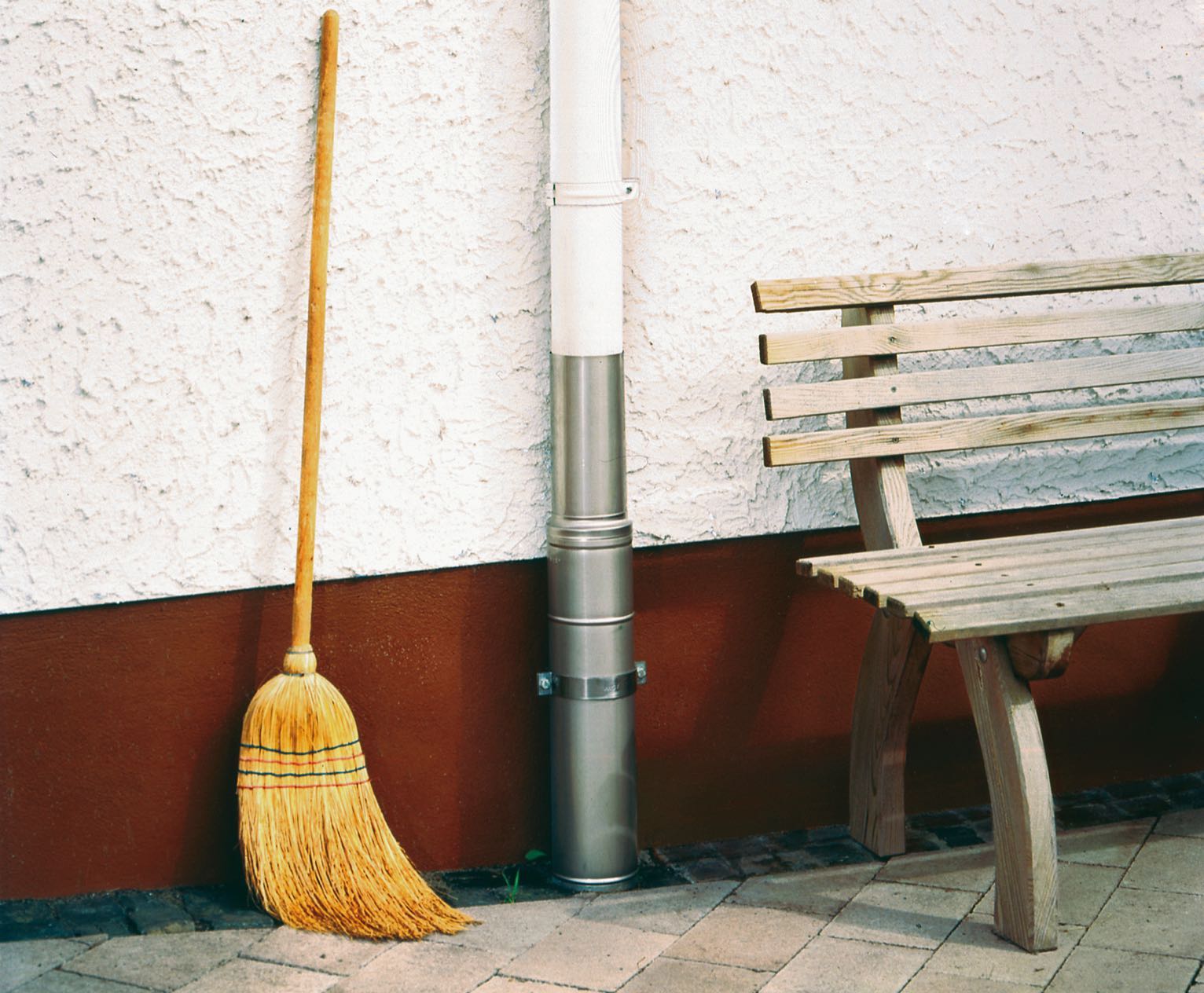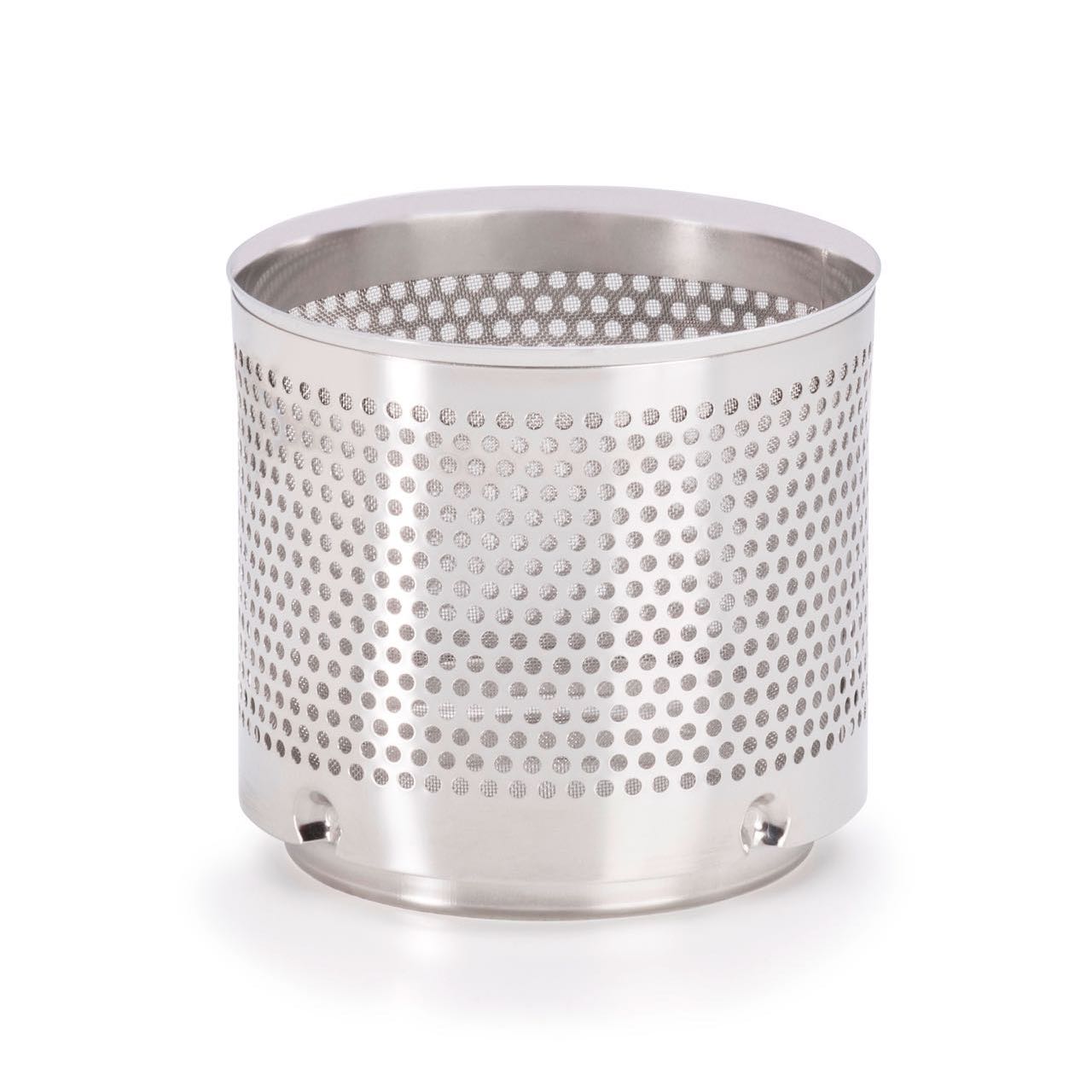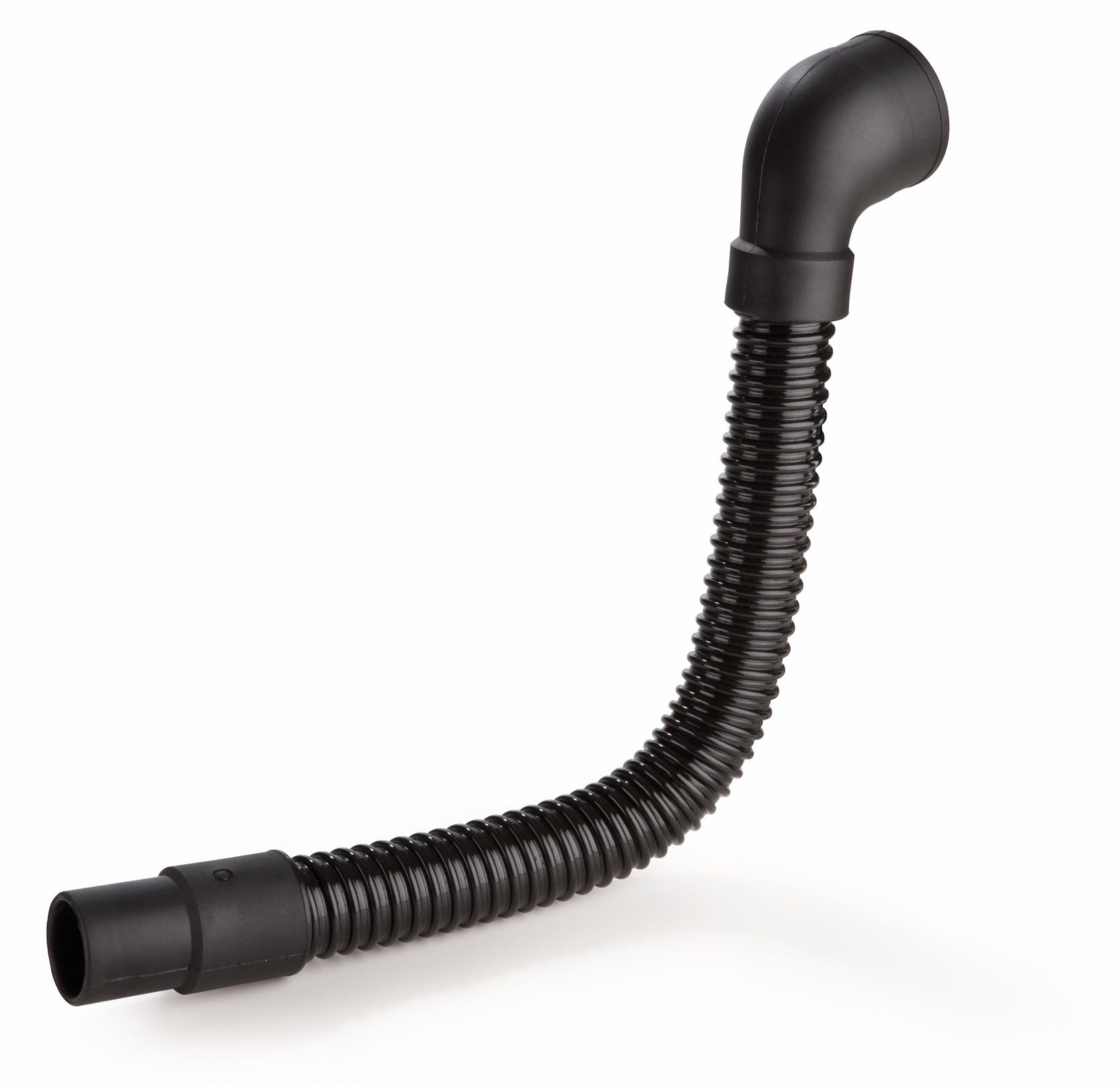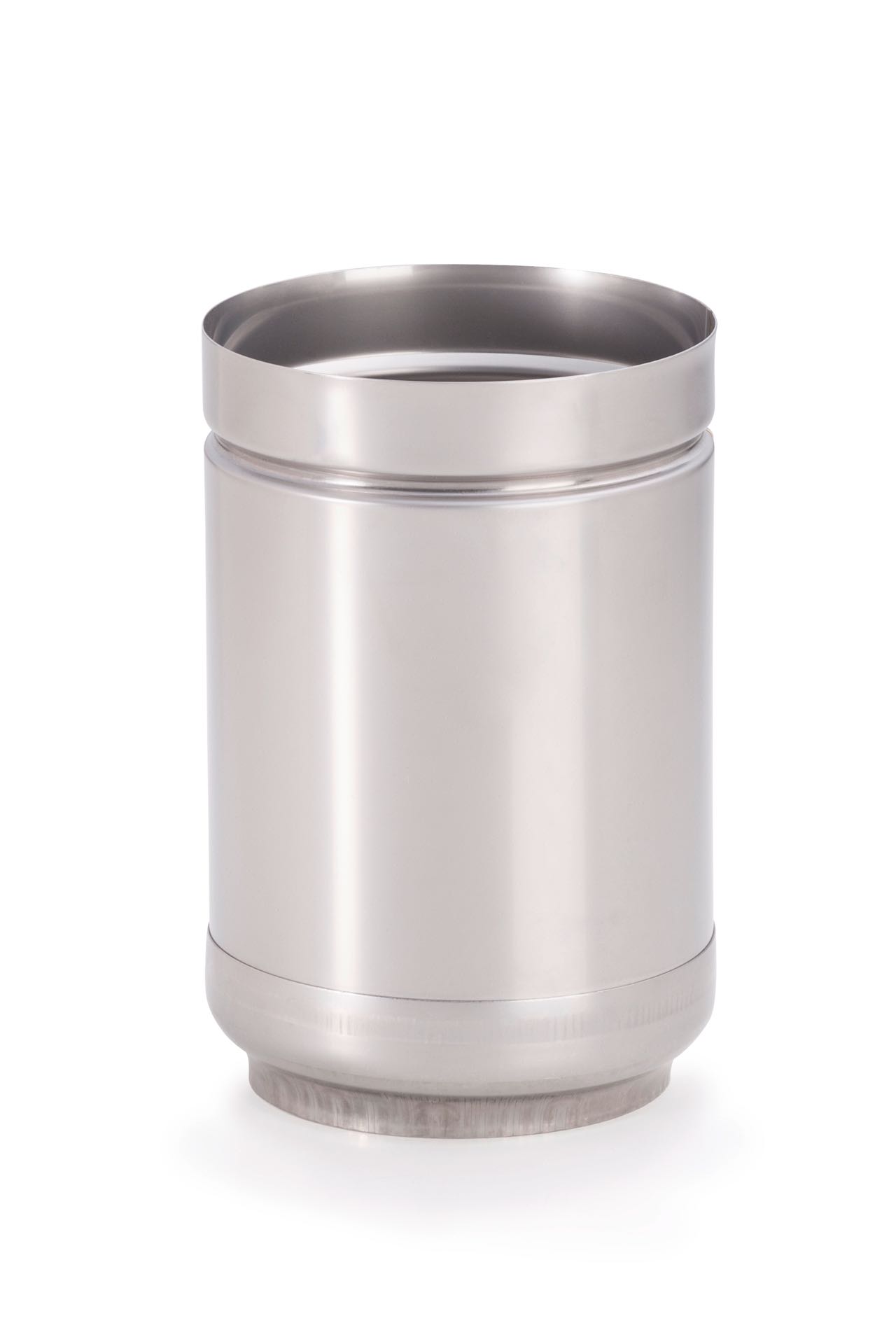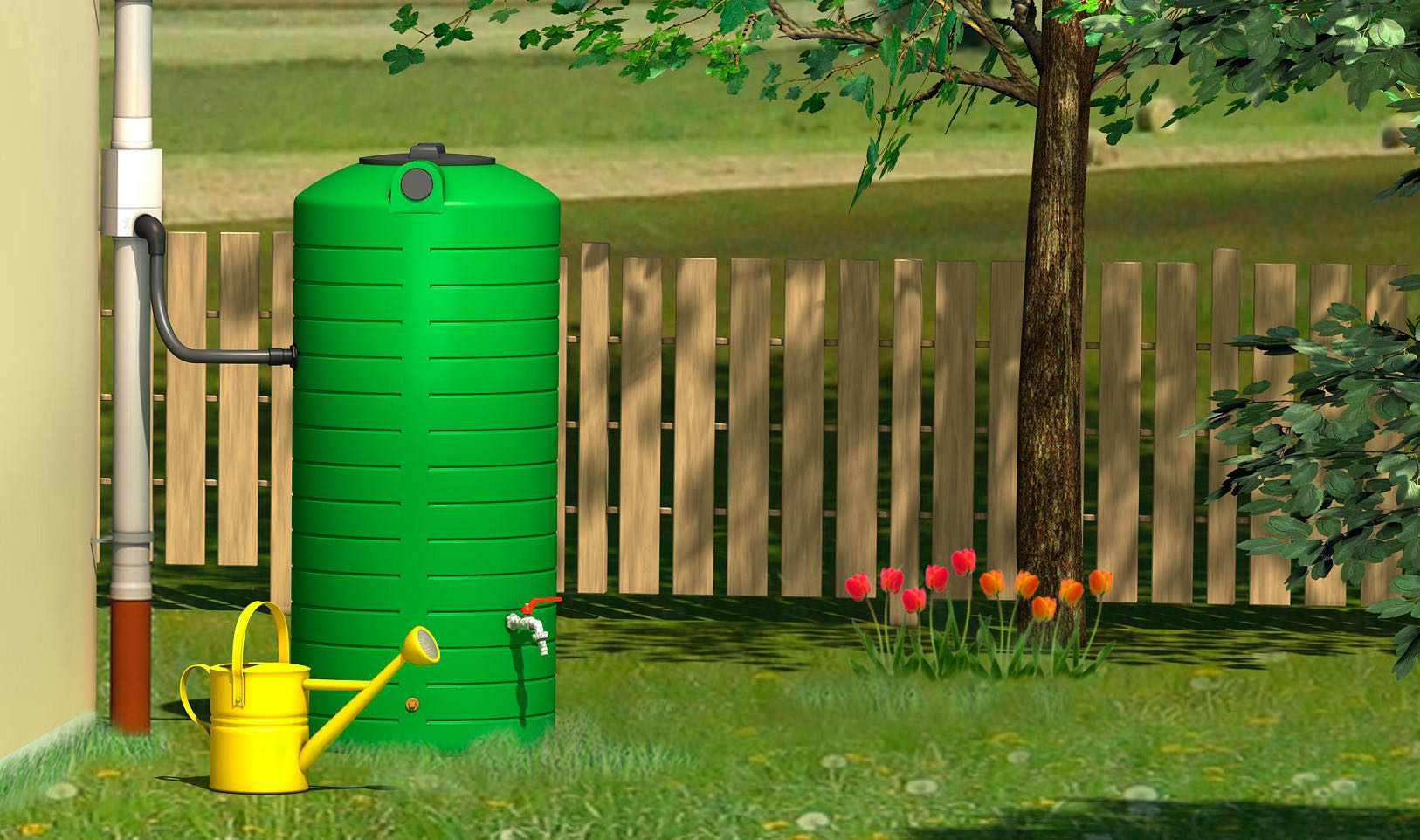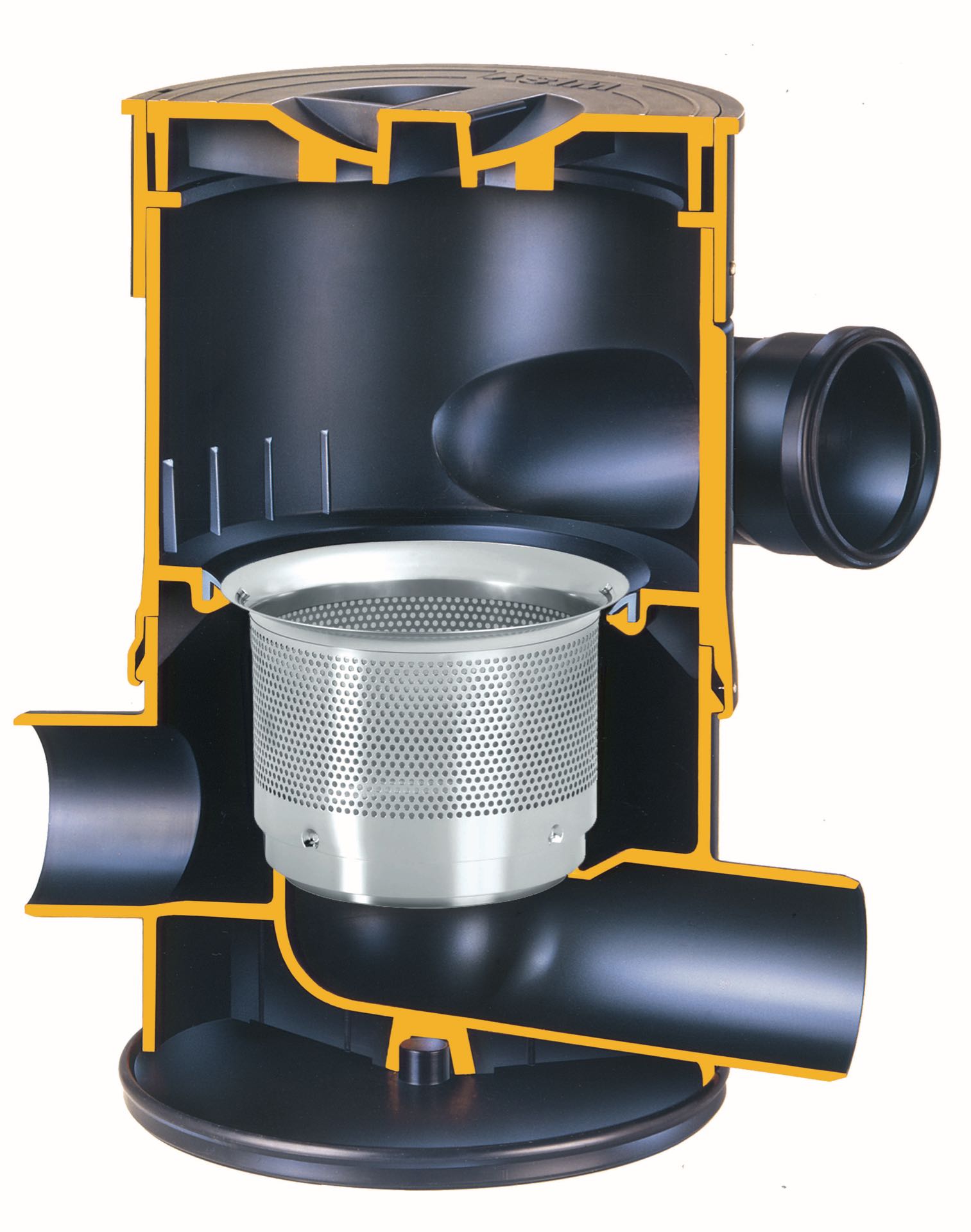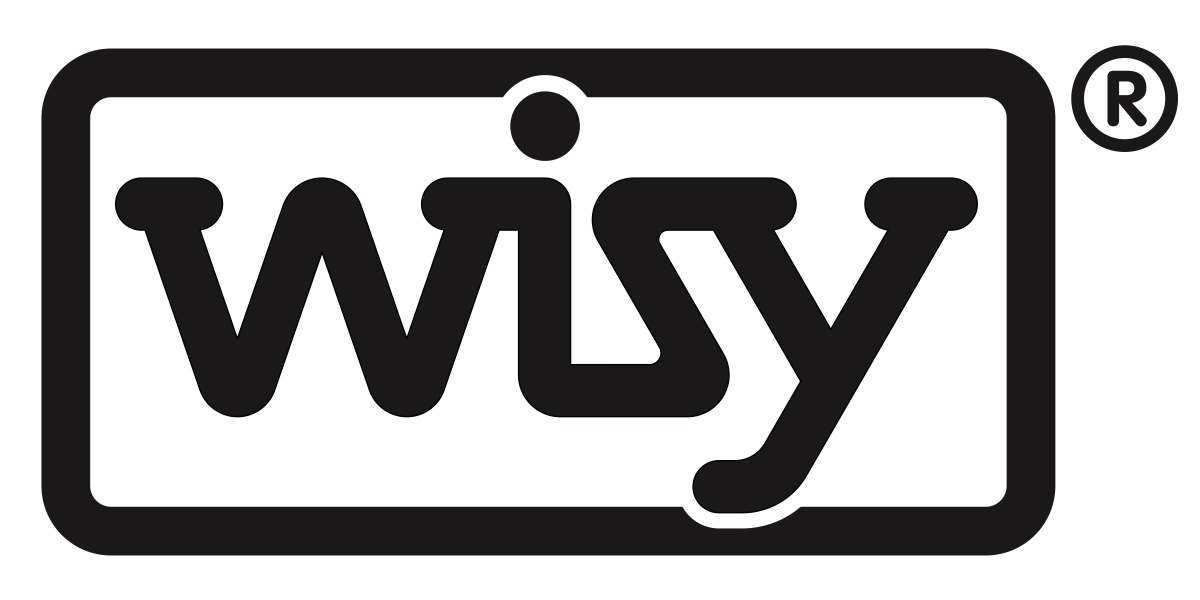
Best downpipe filter
for rainwater in your rainwater system
Even before the water reaches the rainwater barrel or cistern, it is cleaned of leaves and dirt in the downpipe filter. To do this, the rain filter is inserted directly into the downpipe and becomes a pre-filter for the cistern or rainwater barrel.
Learn more now
Function and advantages
of a good downpipe filter
Downpipe filters from WISY are more than just a sieve in the downpipe or a simple gutter filter. They collect clean rainwater and flush away unwanted particles directly.
Clean water
flows to the side...
Rainwater does not fall down the centre of the downpipe, but flows down its inner walls. This is due to the force of adhesion, whereby water molecules adhere to other molecules.
We support this property in the downpipe filter and direct the water further to the side and then through a fine stainless steel mesh to the rainwater storage tank.
Advantages of a downpipe filter
instead of rain flap, leaf separator and gutter filter
In the past, a simple rain flap was often used to collect rainwater. Occasionally, leaf separators or gutter filters were used to remove dirt from the rainwater. However, a downpipe filter is far superior.
Why is a
downpipe filter important?
Without a downpipe filter, dirt particles can get into the rainwater storage tank. This could be leaves from trees, moss from the roof or dead insects, for example. Water containing organic material cannot be stored. Coarse dirt can also block the tap or damage a pump.
A downpipe filter protects you from all of this: it removes organic substances from the rainwater before they reach the rain barrel or rainwater storage tank.

A rain flap
is not a filter
The open rain flap diverts the entire flow of water with all its impurities to the side. It is not able to filter the rainwater and lets it splash into the tank until it overflows. The collected water thus contains all the dirt that has been washed off the roof. When the tank is full, the water overflows uncontrollably and floods the surrounding area. Only when the rain flap is closed manually does the flow into the water tank stop. If you forget to open the rain flap again after removing the water, the tank will remain empty the next time it rains.
Open rain barrel
with rain flap
The rain flap is also usually used in combination with open collection containers or rain barrels, which have their own disadvantages and risks. Additional dirt, e.g. leaves, falls directly into the barrel, mosquito larvae swim there in summer and, in the worst case, they also pose a danger to children playing in them. WISY therefore recommends only using closed rain barrels.
A leaf separator
not only separates leaves
The leaf separator can divert very coarse debris, but after a short time it also diverts a considerable proportion of the water flow, as dirt gets stuck in the separator and the water can no longer flow completely towards the tank. If the connected tank becomes full, it then overflows uncontrollably and floods the area surrounding the tank.
Alternative
Gutter filter?
A gutter filter is a screen that is placed as a filter in the gutter in front of the downpipe. The disadvantages are obvious: Due to the often only coarse filtration, many dirt particles would get into the rainwater storage tank and then impair the water quality there. If the mesh is too fine, the gutter and filter clog up and overflow. In addition, any dirt such as leaves and foliage must be regularly removed from the gutter directly on the roof, which usually requires a ladder to be erected.
WISY downpipe filter
to prevent the rain barrel from overflowing
If the rain barrel is full, the water is diverted downwards in the correctly installed downpipe filter so that the barrel cannot overflow. With both the rain flap and the leaf separator, however, a full rain barrel would overflow, as there is no hydraulic coupling of the water level between the rainwater storage tank and the downpipe.
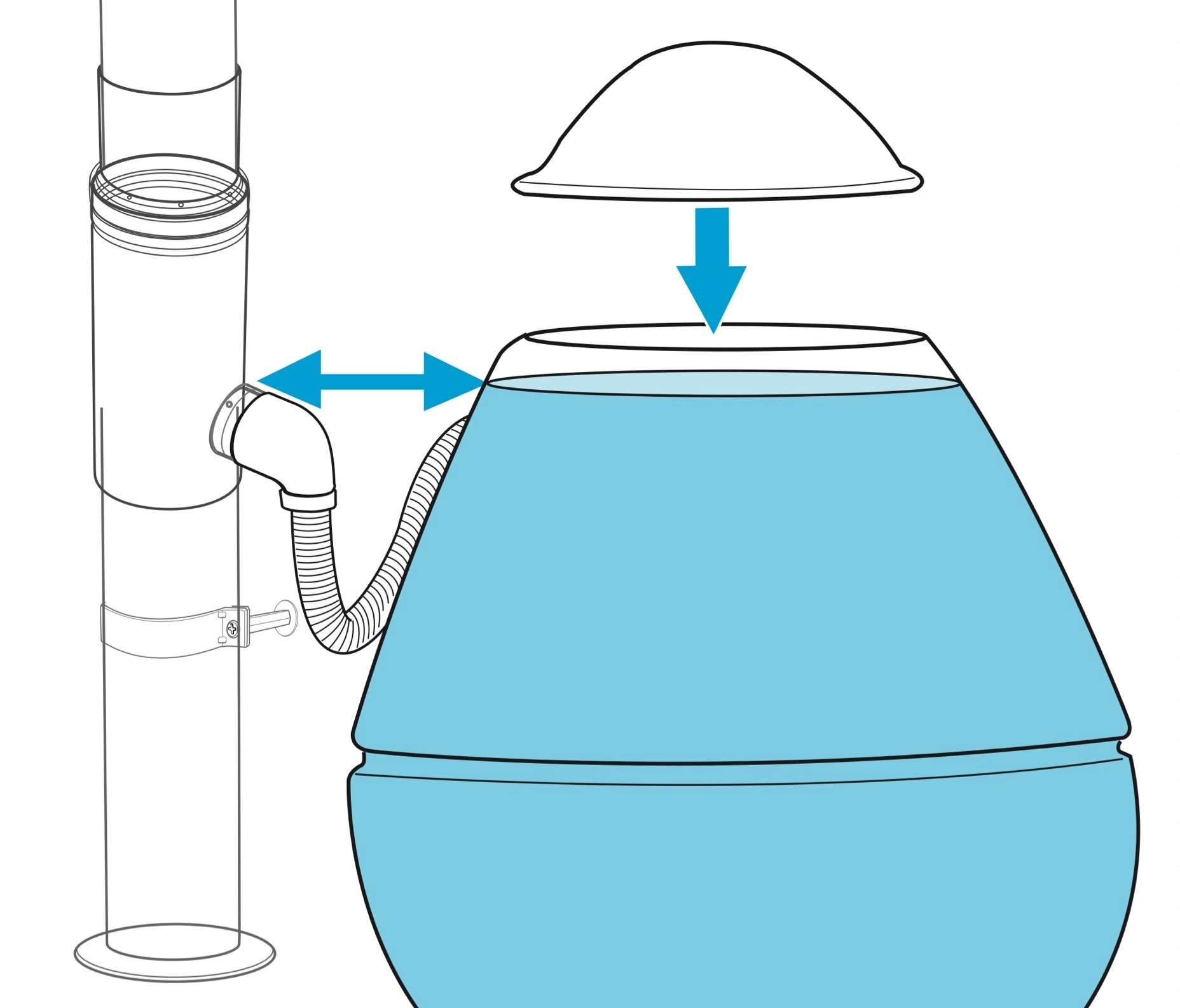
Blocked rainwater downpipe
cleverly excluded in the WISY filter
The diameter of the downpipes is determined by the planner so that rain that falls on the roof surfaces can always run off. Like the downpipes, the rainwater filter must also be sufficiently large so that it does not become an obstacle during heavy rainfall.
Standard-compliant: no constriction
means no backwater in the downpipe
The applicable standard for rainwater utilisation systems defines that there must be no constriction at any point in the rainwater filter, as otherwise leaves can collect here and form a backwater. This rule also applies to downpipe filters. All WISY filters fulfil this requirement. WISY downpipe filters are designed to prevent blockages in your downpipe.
Suitable diameter
for every rainwater downpipe
To ensure that the downpipe filter fits your downpipe, WISY offers several variants for different pipe diameters. WISY downpipe filters are suitable for all standard downpipe diameters from 50 mm to 120 mm. You can find out how to determine the diameter of your downpipe in our article Determining the diameter of the rainwater downpipe.
Easy to install
Easy to retrofit
A downpipe filter can also be easily retrofitted in existing rainwater downpipes. A piece is removed from the downpipe at a suitable height using a hacksaw and replaced with the downpipe filter. An additional cleaning opening in the downpipe is not required.

Downpipe filter for downpipe and standpipe
Overview of models
Downpipe filters from WISY filter the rainwater in the downpipe or standpipe. The rainwater is optimally prepared for use in the toilet and washing machine, for cleaning or for watering the garden. A rainwater diverter without filter function is suitable for a good rainwater yield for the rain barrel.
Accessories
and related products
Conclusion
Summary of downpipe filters from WISY
WISY downpipe filters offer an effective and low-maintenance solution for rainwater filtration directly at the downpipe. In contrast to conventional solutions, they ensure consistently high water quality, minimise maintenance requirements and reliably prevent overflowing when the rain barrel is full.
Expert advice
for downpipe filters and your rainwater system
WISY offers expert advice on choosing the right downpipe filter. Interested parties can use the contact form to get in touch directly with an expert and find the right solution for their water systems.






